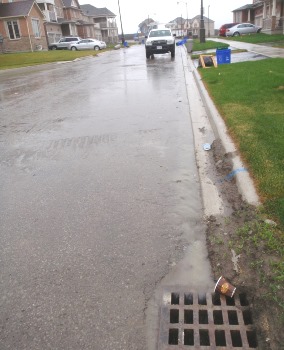Characterization of Urban Runoff Particle Size Distributions
 Insoluble particles and other solid materials that become suspended in water are, in terms of total mass, the largest source of water pollution. Suspended particulate matter clouds the water, reduces the ability of some aquatic organisms to find food, clogs and abrades fish gills, inhibits photosynthesis by aquatic plants, disrupts aquatic food webs, and acts as a transport vector for heavy metals, pesticides, nutrients and other harmful substances. Once deposited, the sediment can destroy the feeding and spawning grounds of fish, and fill lakes, artificial reservoirs and stream channels.
Insoluble particles and other solid materials that become suspended in water are, in terms of total mass, the largest source of water pollution. Suspended particulate matter clouds the water, reduces the ability of some aquatic organisms to find food, clogs and abrades fish gills, inhibits photosynthesis by aquatic plants, disrupts aquatic food webs, and acts as a transport vector for heavy metals, pesticides, nutrients and other harmful substances. Once deposited, the sediment can destroy the feeding and spawning grounds of fish, and fill lakes, artificial reservoirs and stream channels.
The distance that suspended solids travel, and the type and quantity of pollutants transported, is strongly influenced by the size and shape of the particles in runoff. While large particles settle out rapidly, particles in the smaller size range remain in suspension for long distances. The smaller silt and clay sized particles also have greater surface area by mass than larger particles, and thus offer more surface sites for the adsorption of dissolved pollutants.
The effectiveness of stormwater best management practices that rely, at least in part, on sedimentation for treatment of runoff is strongly influenced by the size distribution of particles because smaller particles tend to have lower settling velocities. Thus, accurate data and information on the size distribution of particles in urban runoff are critical to ensuring that these practices are appropriately designed and sized.
This project expands on earlier studies by testing the accuracy and reliability of common laboratory PSD analytical methods, and identifying PSD ranges in stormwater runoff collected from six high impervious drainage areas in the Greater Toronto Area (GTA). Field sampling PSD results are compared to other local stormwater runoff studies or studies of similar source areas to provide a context for interpretation of results. To view the results, download the executive summary or full report from the side bar on this page.
